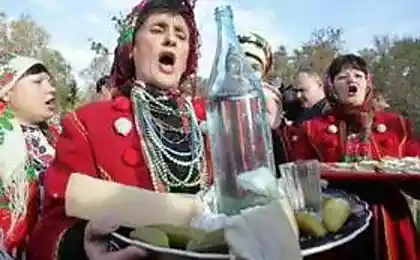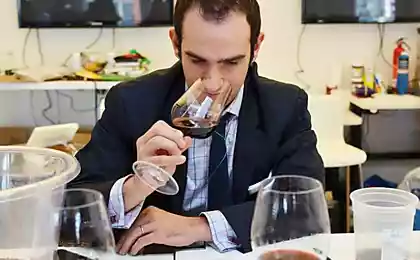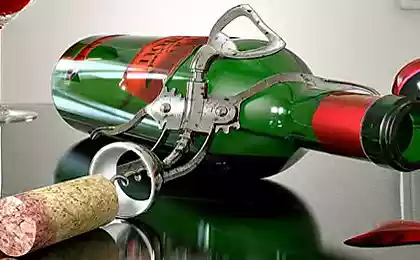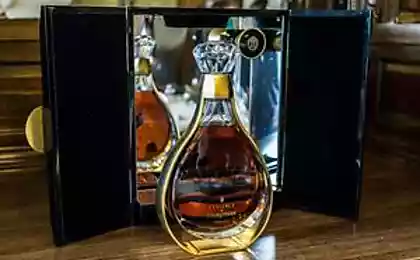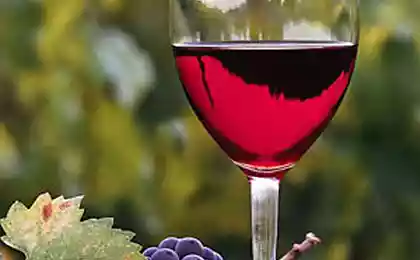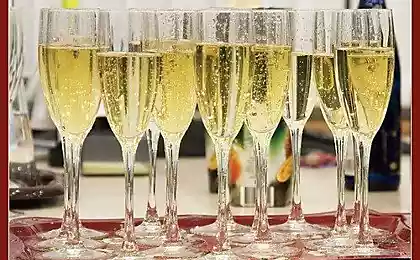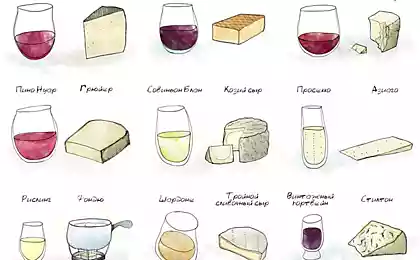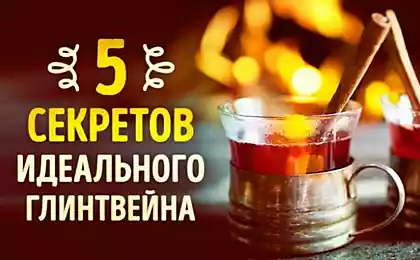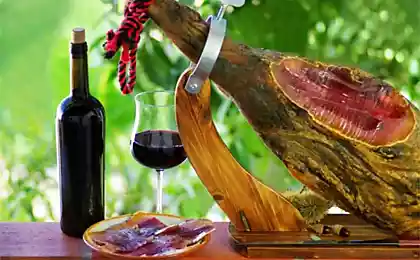1007
How to taste wine
Writes Sergey Dolya:
In Paris, the first time I got into a wine museum. Despite the fact that the wine I talk quite often, many things were a complete revelation to me, and at the end of a three-hour tour we were invited to taste wine and learn how to do it right ...
30 ph
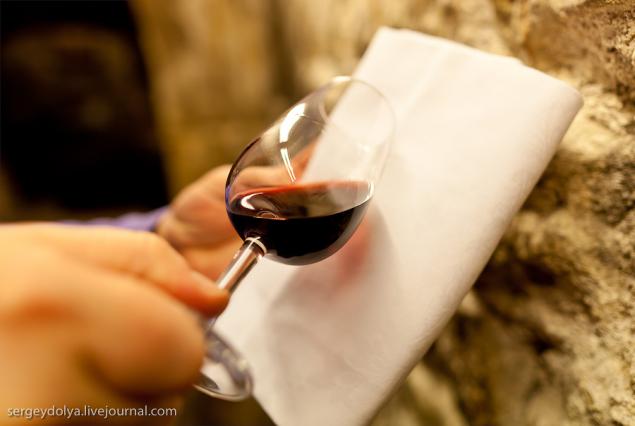
Wine Museum in Paris was founded eshansonami (cup-bearers) - ancestors of modern sommelier. Eshansony tasted wine of kings and checked for yourself whether it is not poisoned:

The museum exhibition starts with ancient Egypt. At that time, wine was considered a divine drink and drunks highly respected, considering that they come into contact with God:
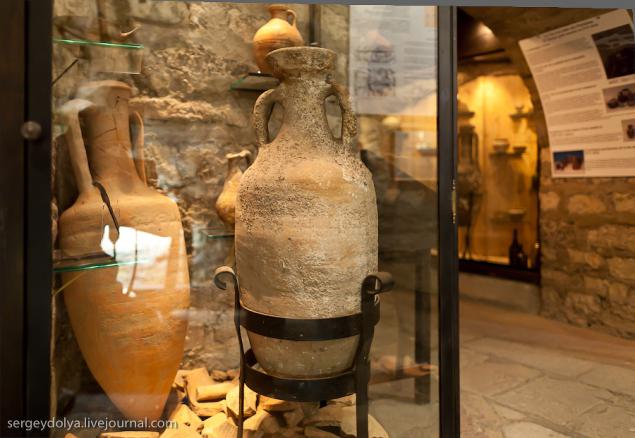
Next exhibition tells mainly about French wines. For example, using this French crossbow killing small birds "merlyan" who ate the grapes. It is in honor of these birds grapes called "Merlot»:
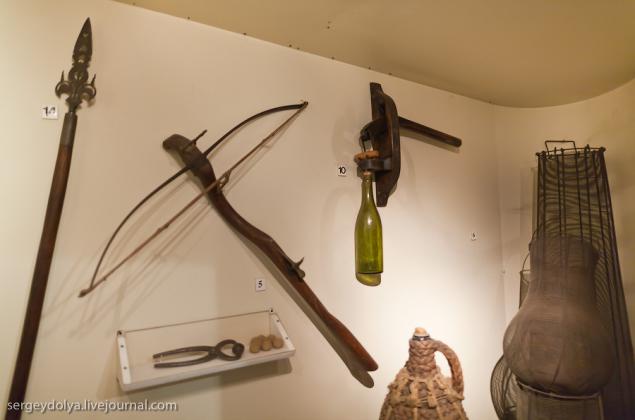
The museum features a lot of obscure instruments used for wine production:
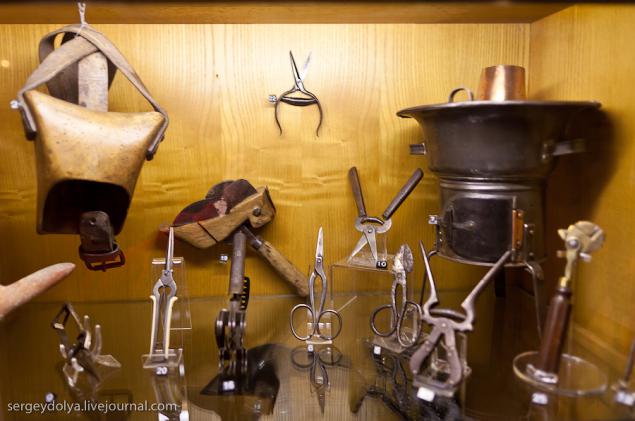
06
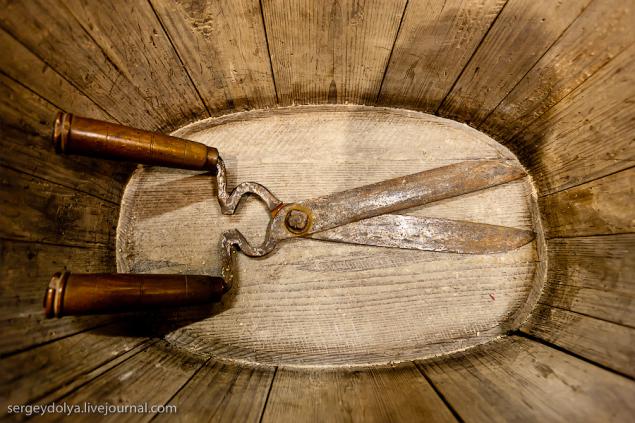
In the Champagne region, located in the north of the country all the time is not enough sun and grapes harvested very late. Accordingly, he did not have time to ferment and the fermentation stopped in the winter. In the spring he resumed while the barrels often exploded. Wine from the barrels of wine, called the Devil, and it was forbidden to drink. In the 17th century, according to legend, Don Perignon invented the technology in the bottling of the wine invented shortly before the British began to bottle and sparkling wine is called:
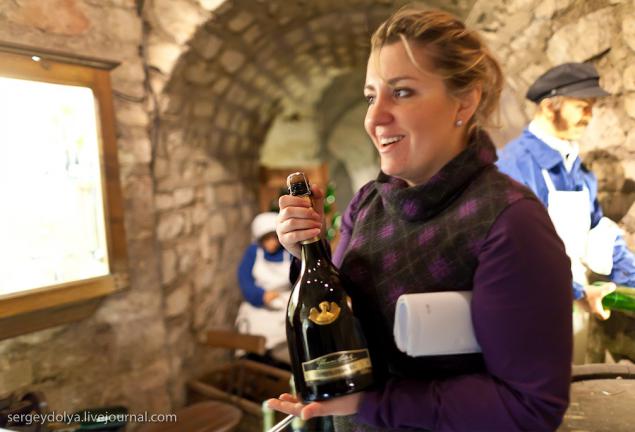
Instead of slugging then used a cloth soaked in wax, but the bottles still continues to explode. Spas situation Zhakson who fashioned the world's first muzzle of wire, which he pulled out of the corset of his wife:
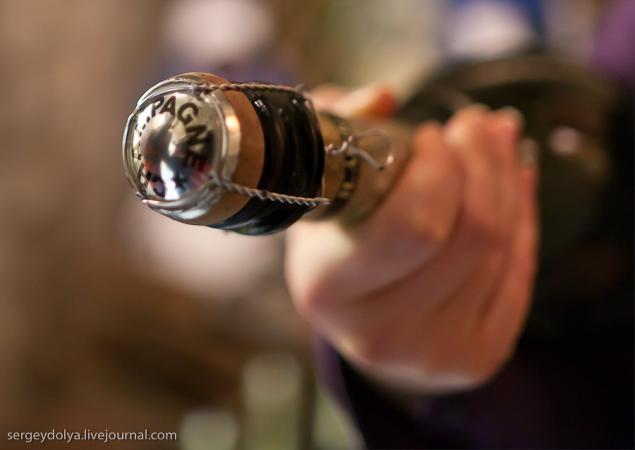
While the technology is not allowed to pour the same amount of wine in the bottle. To hide it, invented koleredku or tie - neck of the bottle sealed foil:

In the production of Champagne it is unacceptable that it remained sediment. To avoid this, in the final stage of the bottle is stored in a music stand upside down and rotated frequently. This process is called Remuage. Before you send the champagne for sale, bottles opened and removed them from the sediment. This process is called disgorging:
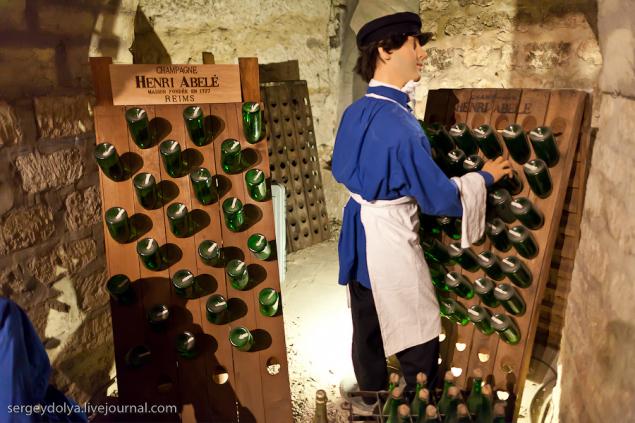
Barrels for wine traditionally made from either the French or American oak. Before we turn to an oak barrel wood dried 2-3 years outdoors. During wine aging in the barrel, it blended tannins of wood and wine:
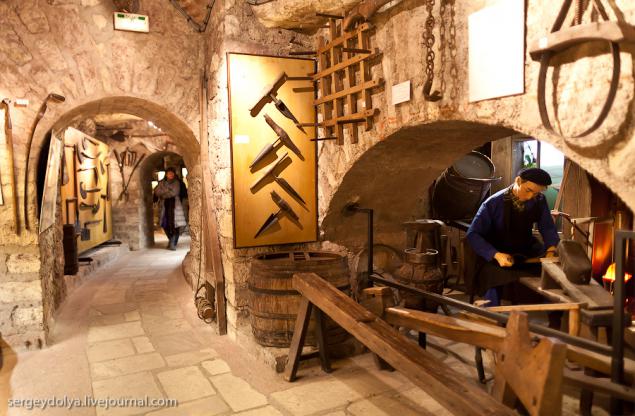
In the 17th century, after the invention of the bottle was a lot of experimentation with its shape:
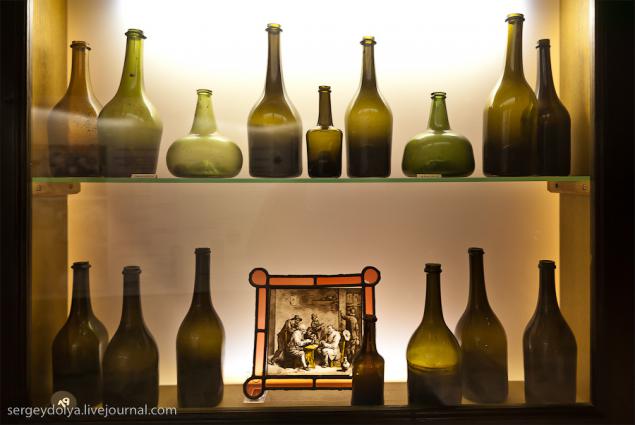
It is also experimenting with a form of glasses. For example, this praobrazom champagne glass shape of the breast became Madame de Pompadour:

In the 17th century, an unknown British soldier tried to open a bottle of wine ramrod weapon and accidentally invented the corkscrew:

if necessary, a vine of grapes can be stored up to 7 months in the bottle with water. With the help of these cabinets were transported grapes from Europe to America:
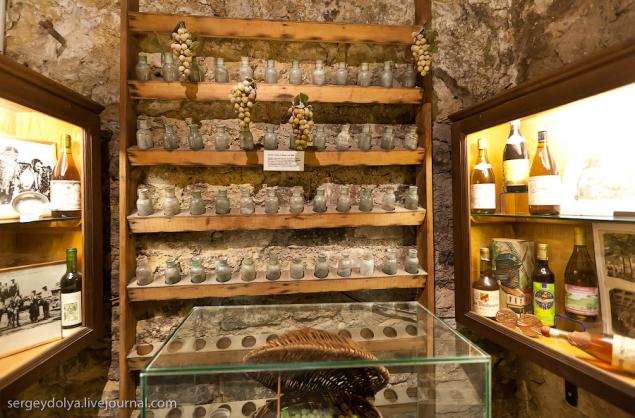
Testovan - a cup, which is used by a sommelier for wine tasting before serving guests:
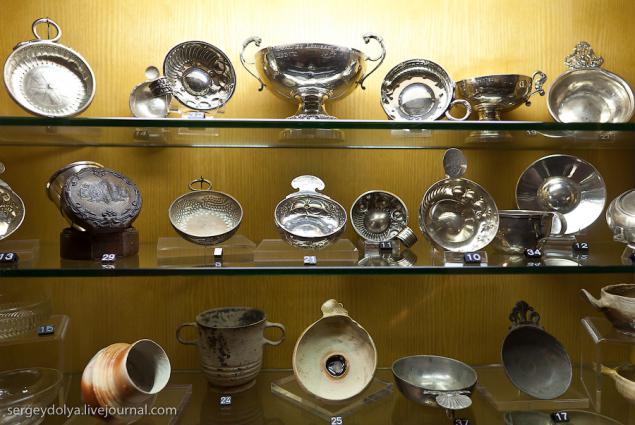
In the 19th century, Bordeaux region was influenced by the British in 1855, they created the famous classification of Bordeaux wines under the name "5 crew."
Here it is necessary to make a digression. IT IS IMPORTANT!
French wines are divided by geographic region. On the bottle can be written Bordeaux or Burgundy or Alsace, etc
Each of these regions is divided into smaller regions. If the winemaker, follows all the rules of the art, which are generally stricter than the rules of a large region, it can write the name of the field on the bottle, such as Medoc or Chablis or gravel, etc.
Within these areas there are specific vineyards such as Chateau Margaux or Chateau Haut-Brion and Chateau Lafite. Each of the best vineyards of the English regions and assigned a score from 1 to 5th Cru.
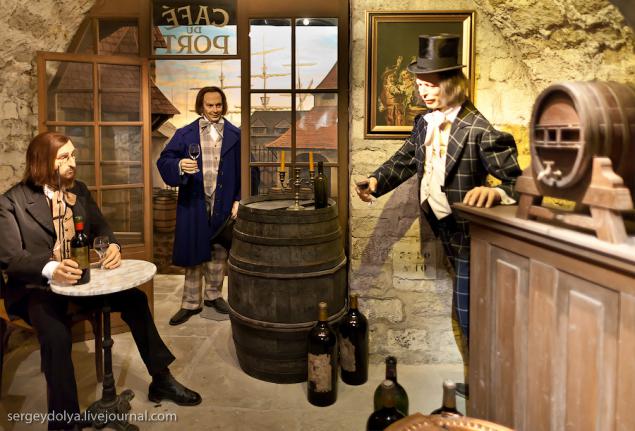
The museum has examples of very old wine:
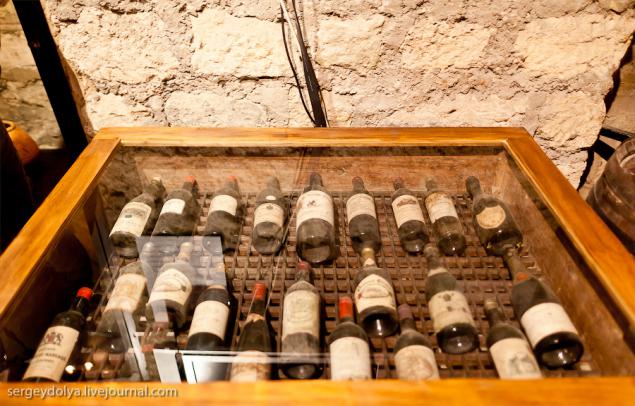
For example, the champagne of Epernay in 1807. Clearly, this can not be drinking wine, but the bottle is stored until now:
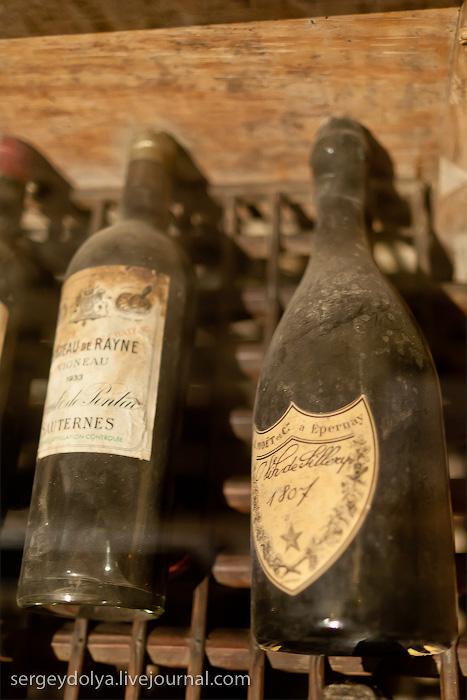
Before tasting showed us alambik - alembic for brandy (similar to the device used for Armagnac):
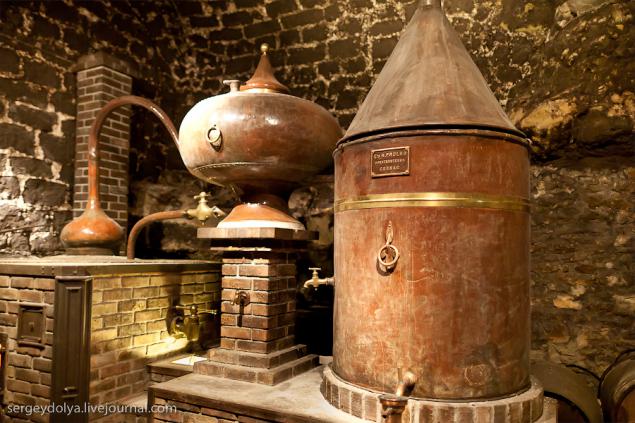
We tasted 3 wines - Chablis, and Pinot Noir from Burgundy and Médoc n pole one bonus Wine - Saint-Emilion Bordeaux:
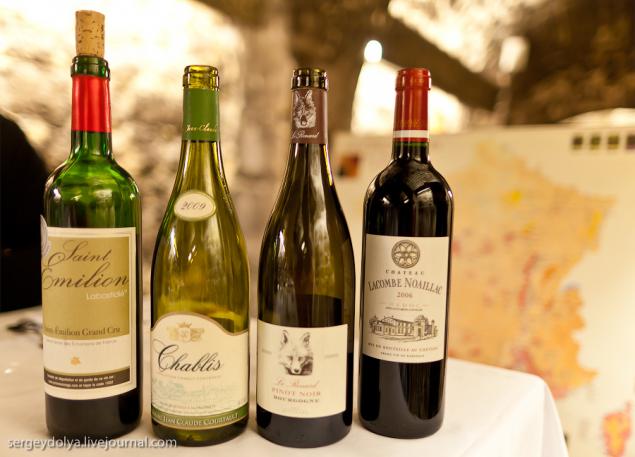
After the bottle was opened, the first thing you need to smell the cork to check butlku for cork disease. The pores of the plug may occasionally contain pathogens "bretanomises" that synthesize unpleasant smelling substances. If the plug is struck, it will smell like a dirty rag, and of dog, but the wine itself will become unpleasant nuances in aroma and taste:
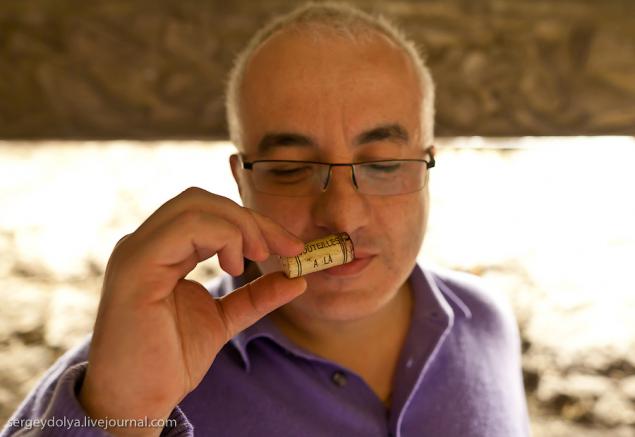
So far, the best sommelier Russia Artur Sargsyan spilled wine, all trying to catch a shot in the darkness of a cellar:
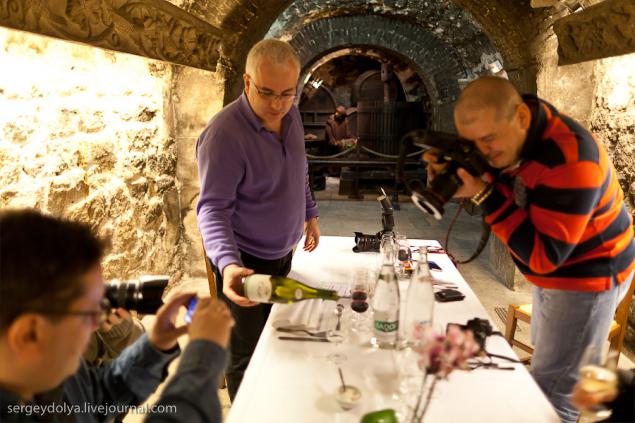
Traditionally used for wine glass, designed by INAO (the French Institute of Wine). The height of the glass 13 centimeters, feet 7 centimeters. Glass holding the leg, so that the wine is not heated:
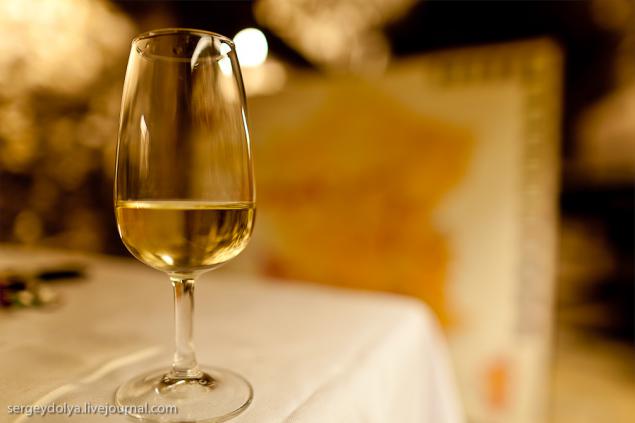
Wine tasting can be divided into 3 stages:
1. Eye
2. Nose
3. Mouth
The first thing you need to make a visual assessment of the wine, that is to look at the color of the wine on the background of a white tablecloth and napkins:
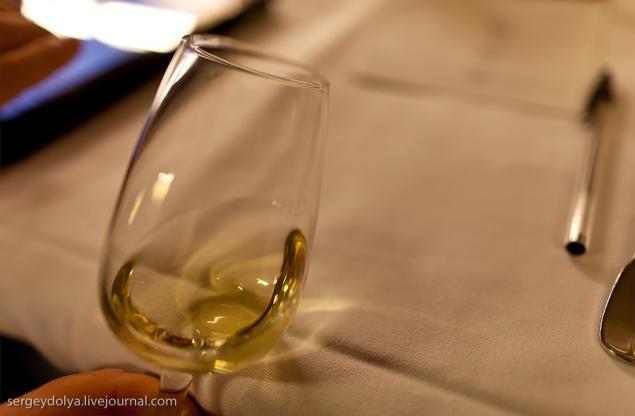
The color can be assumed from what region of the country takes the wine from the north or the south of France. Generally, the north of the region, the less saturated colors, and the wine is paler and closer to the south, the brighter and more saturated. The following picture is clearly visible. Left brighter northern Burgundy, south of Bordeaux and on the right:
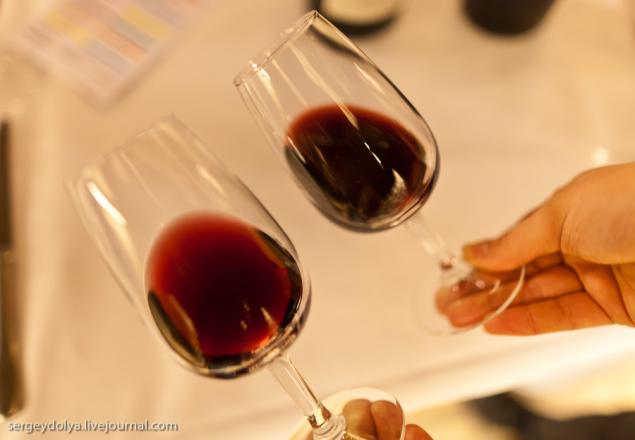
You also need to twist the glass to the wine washed over its internal wall, and then look at the legs or tears that will flow back. If they fall down slowly, which means that a lot of wine or sugar alcohol. If quickly, the wine is light and maloalkogolnoe:
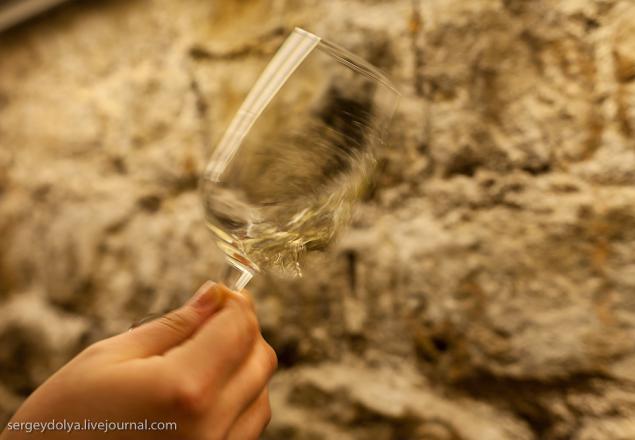
The second step is to hold olfactory analysis, that is to smell the wine.
There are 3 types of flavors:
Primary - the aromas of the grapes
Secondary - odors associated with fermentation
Tertiary - fragrances that appear in the process of aging in barrel or bottle
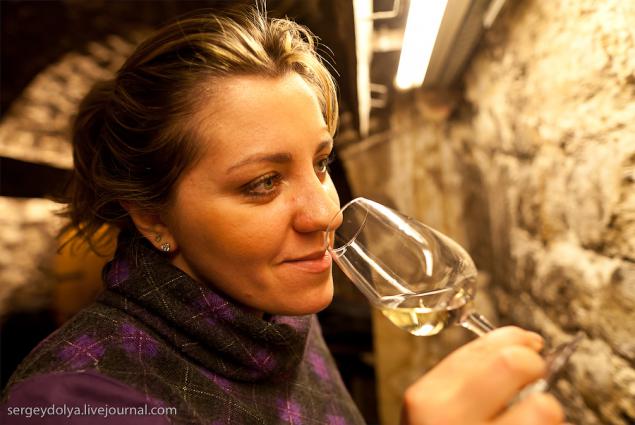
Finally, you should try the taste of the wine. We have 4 in the language area. Each of them is responsible for a certain taste: salty, sour, sweet and bitter. It is necessary to take a sip of wine and bathe them with all the mouth, tongue to all the receptors were involved:
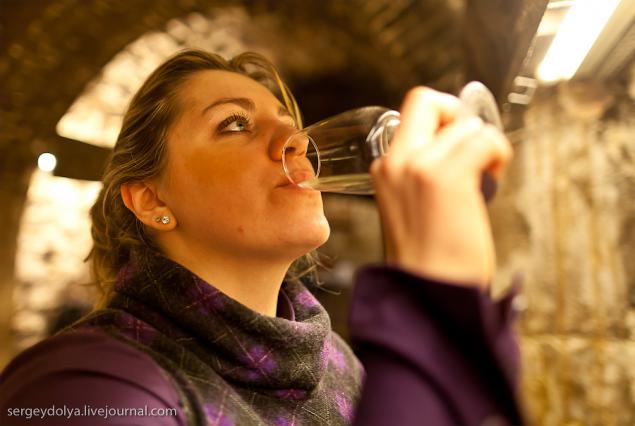
Then, before swallowing the wine, it is necessary to draw some air, making his lips and exhale through the nose. This is done so that the aroma can fully unfold:
I want to share a couple of more interesting things I learned today.
If you spill red wine on your clothes, you have to pour it on top of the white wine and then fill with salt. In this case, it will be possible to wash.
The French claim that their fine foie gras goes with our cakes. I do not check.
We have heard many times about the "bath of champagne." In fact, typically, gain water bath and poured on top of a pair of bottles of champagne. In one case, "our boy" decided to make a bath for your favorite pure champagne. I do not know how many bottles of "Crystal" it took, but he did not know that alcohol is well absorbed through the skin. In general, as soon as his favorite village in the bath, she just died of alcohol poisoning ...
Well, a couple of phrases that can be learned and case inserted into the conversation:
"Ask me a pinot nuarchika older»
"I'm afraid perezhelezit mouth»
"And how do you Gewurztraminer of 2007?»
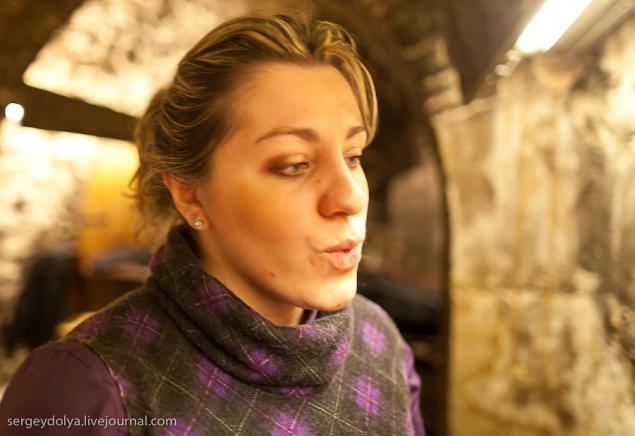
Source:
In Paris, the first time I got into a wine museum. Despite the fact that the wine I talk quite often, many things were a complete revelation to me, and at the end of a three-hour tour we were invited to taste wine and learn how to do it right ...
30 ph

Wine Museum in Paris was founded eshansonami (cup-bearers) - ancestors of modern sommelier. Eshansony tasted wine of kings and checked for yourself whether it is not poisoned:

The museum exhibition starts with ancient Egypt. At that time, wine was considered a divine drink and drunks highly respected, considering that they come into contact with God:

Next exhibition tells mainly about French wines. For example, using this French crossbow killing small birds "merlyan" who ate the grapes. It is in honor of these birds grapes called "Merlot»:

The museum features a lot of obscure instruments used for wine production:

06

In the Champagne region, located in the north of the country all the time is not enough sun and grapes harvested very late. Accordingly, he did not have time to ferment and the fermentation stopped in the winter. In the spring he resumed while the barrels often exploded. Wine from the barrels of wine, called the Devil, and it was forbidden to drink. In the 17th century, according to legend, Don Perignon invented the technology in the bottling of the wine invented shortly before the British began to bottle and sparkling wine is called:

Instead of slugging then used a cloth soaked in wax, but the bottles still continues to explode. Spas situation Zhakson who fashioned the world's first muzzle of wire, which he pulled out of the corset of his wife:

While the technology is not allowed to pour the same amount of wine in the bottle. To hide it, invented koleredku or tie - neck of the bottle sealed foil:

In the production of Champagne it is unacceptable that it remained sediment. To avoid this, in the final stage of the bottle is stored in a music stand upside down and rotated frequently. This process is called Remuage. Before you send the champagne for sale, bottles opened and removed them from the sediment. This process is called disgorging:

Barrels for wine traditionally made from either the French or American oak. Before we turn to an oak barrel wood dried 2-3 years outdoors. During wine aging in the barrel, it blended tannins of wood and wine:

In the 17th century, after the invention of the bottle was a lot of experimentation with its shape:

It is also experimenting with a form of glasses. For example, this praobrazom champagne glass shape of the breast became Madame de Pompadour:

In the 17th century, an unknown British soldier tried to open a bottle of wine ramrod weapon and accidentally invented the corkscrew:

if necessary, a vine of grapes can be stored up to 7 months in the bottle with water. With the help of these cabinets were transported grapes from Europe to America:

Testovan - a cup, which is used by a sommelier for wine tasting before serving guests:

In the 19th century, Bordeaux region was influenced by the British in 1855, they created the famous classification of Bordeaux wines under the name "5 crew."
Here it is necessary to make a digression. IT IS IMPORTANT!
French wines are divided by geographic region. On the bottle can be written Bordeaux or Burgundy or Alsace, etc
Each of these regions is divided into smaller regions. If the winemaker, follows all the rules of the art, which are generally stricter than the rules of a large region, it can write the name of the field on the bottle, such as Medoc or Chablis or gravel, etc.
Within these areas there are specific vineyards such as Chateau Margaux or Chateau Haut-Brion and Chateau Lafite. Each of the best vineyards of the English regions and assigned a score from 1 to 5th Cru.

The museum has examples of very old wine:

For example, the champagne of Epernay in 1807. Clearly, this can not be drinking wine, but the bottle is stored until now:

Before tasting showed us alambik - alembic for brandy (similar to the device used for Armagnac):

We tasted 3 wines - Chablis, and Pinot Noir from Burgundy and Médoc n pole one bonus Wine - Saint-Emilion Bordeaux:

After the bottle was opened, the first thing you need to smell the cork to check butlku for cork disease. The pores of the plug may occasionally contain pathogens "bretanomises" that synthesize unpleasant smelling substances. If the plug is struck, it will smell like a dirty rag, and of dog, but the wine itself will become unpleasant nuances in aroma and taste:

So far, the best sommelier Russia Artur Sargsyan spilled wine, all trying to catch a shot in the darkness of a cellar:

Traditionally used for wine glass, designed by INAO (the French Institute of Wine). The height of the glass 13 centimeters, feet 7 centimeters. Glass holding the leg, so that the wine is not heated:

Wine tasting can be divided into 3 stages:
1. Eye
2. Nose
3. Mouth
The first thing you need to make a visual assessment of the wine, that is to look at the color of the wine on the background of a white tablecloth and napkins:

The color can be assumed from what region of the country takes the wine from the north or the south of France. Generally, the north of the region, the less saturated colors, and the wine is paler and closer to the south, the brighter and more saturated. The following picture is clearly visible. Left brighter northern Burgundy, south of Bordeaux and on the right:

You also need to twist the glass to the wine washed over its internal wall, and then look at the legs or tears that will flow back. If they fall down slowly, which means that a lot of wine or sugar alcohol. If quickly, the wine is light and maloalkogolnoe:

The second step is to hold olfactory analysis, that is to smell the wine.
There are 3 types of flavors:
Primary - the aromas of the grapes
Secondary - odors associated with fermentation
Tertiary - fragrances that appear in the process of aging in barrel or bottle

Finally, you should try the taste of the wine. We have 4 in the language area. Each of them is responsible for a certain taste: salty, sour, sweet and bitter. It is necessary to take a sip of wine and bathe them with all the mouth, tongue to all the receptors were involved:

Then, before swallowing the wine, it is necessary to draw some air, making his lips and exhale through the nose. This is done so that the aroma can fully unfold:
I want to share a couple of more interesting things I learned today.
If you spill red wine on your clothes, you have to pour it on top of the white wine and then fill with salt. In this case, it will be possible to wash.
The French claim that their fine foie gras goes with our cakes. I do not check.
We have heard many times about the "bath of champagne." In fact, typically, gain water bath and poured on top of a pair of bottles of champagne. In one case, "our boy" decided to make a bath for your favorite pure champagne. I do not know how many bottles of "Crystal" it took, but he did not know that alcohol is well absorbed through the skin. In general, as soon as his favorite village in the bath, she just died of alcohol poisoning ...
Well, a couple of phrases that can be learned and case inserted into the conversation:
"Ask me a pinot nuarchika older»
"I'm afraid perezhelezit mouth»
"And how do you Gewurztraminer of 2007?»

Source:
